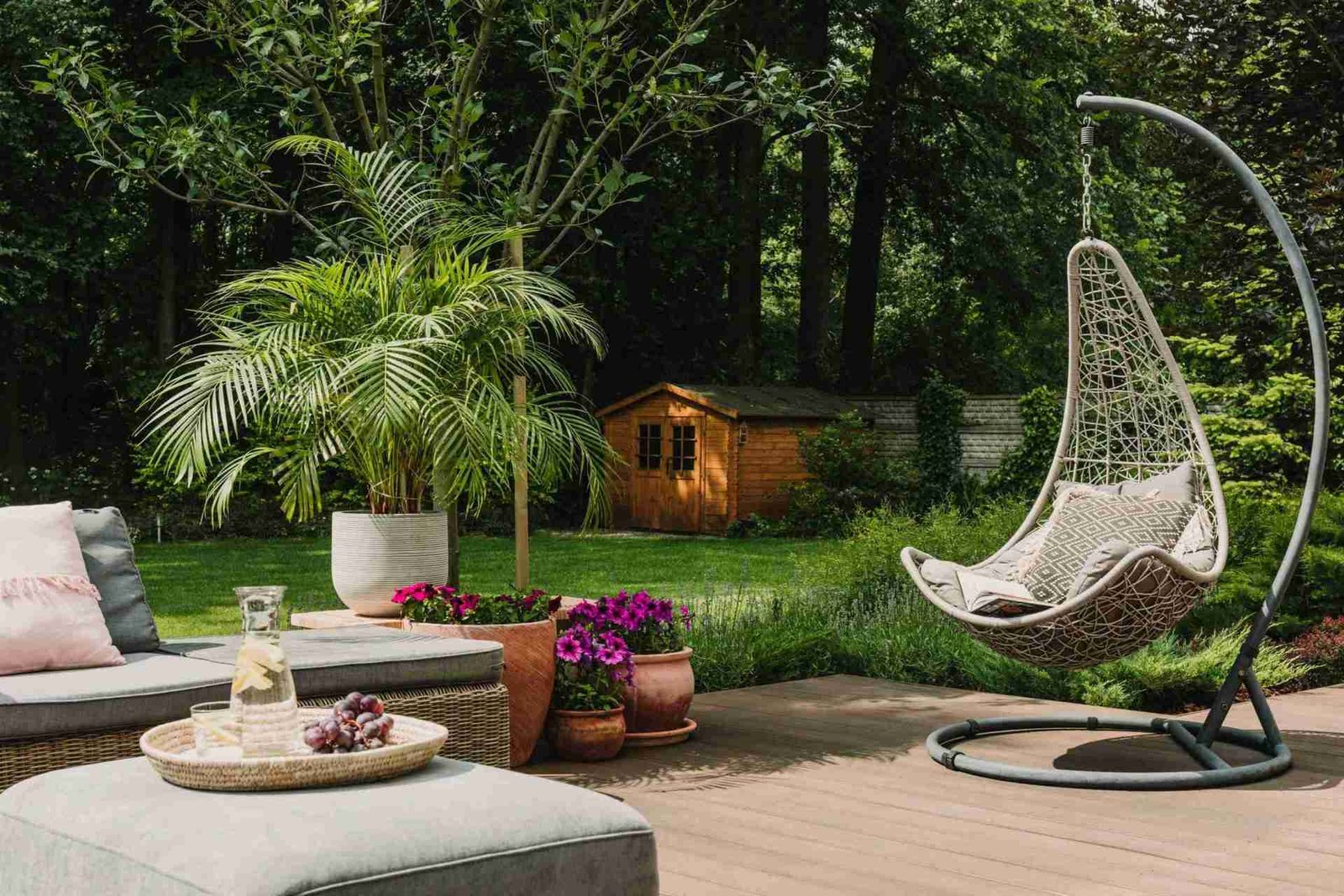When you walk into your yard, you want it to feel like a peaceful oasis where you can kick up your feet and enjoy an island of calm surrounded by the business of life. And on days when the sun just won’t be deterred by a cloud, shade trees can be key to at-home relaxation. After all, who doesn’t picture themselves in a hammock with a good book and some lemonade shielded from the heat by a tree with a long history?
If you’re getting ready to dig into some landscaping with longevity, you’ve come to the right place. When you’re looking for shade trees there is a long list of things to consider. Sometimes, the faster it grows, the better. After all, neighbors aren’t always your best friends, and sometimes you’d rather watch leaves sway in the wind rather than Bob firing up the grill for the fifth time this week.
For those of you who like a tidy, low-maintenance yard, a “clean” tree is vital. Because let’s face it, until retirement, time to work on your yard is limited. The more things can take care of themselves, the better.
And for still others, aesthetics or food-producing is key. If you’re going to go through all the work, why not get the satisfaction of glancing out the kitchen window and seeing more show-stopping blooms on a tree than you’ve ever been able to get from your garden? Better yet, reap the rewards of fruit that you can eat for months.
Whichever category you fall into, you should be able to find something on this list that will help you create a spectacular oasis for all seasons. Or, at very least, inspiration for you to dig deeper into the amazing trees that the world has to offer.
1. Crape Myrtle (Lagerstroemia indica)
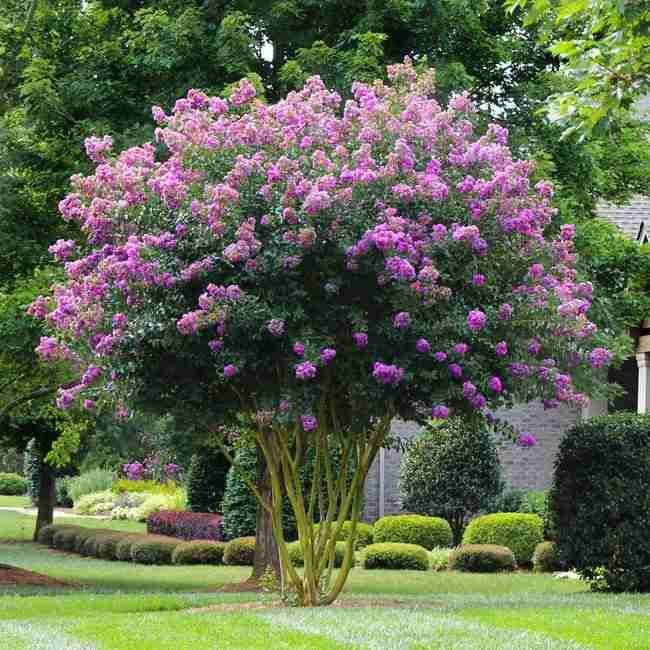
Crape myrtles, native to China and Korea, are stunning flowering trees that produce bright pink blooms all over the tips of the branches starting in the spring or early summer. They’re sometimes called the “lilac of the South” because the flowers are reminiscent of lilacs. Like their namesake, they also attract bees, an animal population that could use all the help they can get.
You’ll mainly find these growing under full sun in zones 6-9, essentially south of the old Mason-Dixon line and as far west as the southeast corner of New Mexico. These trees create quite a show when planted in groups. They also work well as a type of hedge when planted three to four feet apart, as they have very dense foliage. If planted in full sun, crape myrtles grow as fast as 24 inches a year and top out anywhere between 15 and 25 feet high and 6-15 feet wide.
Living somewhere with unreliable rain? No problem. Crape myrtles will tough out droughts with the best of ‘em after they’re established. And you’ll love the color changes in the fall.
2. Yellow Delicious Apple (Malue domestica)
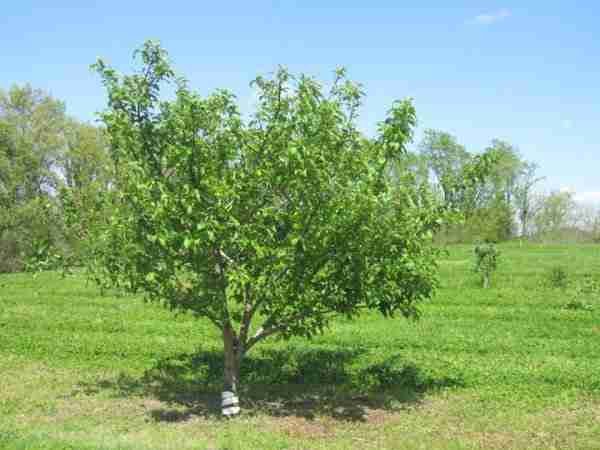
Fast-growing fruit trees are another great option for those who want a multi use tree that will add to your pantry as well as the ambiance of the yard. Who doesn’t love apples? As anyone with one of these knows, a tree that’s well cared for can produce loads and loads of fruit. So consider the versatility and longevity of the harvest.
Yellow delicious apples are perfect for pies, applesauce, and preserves if you get tired of simply eating them fresh. And they can be kept for three to six months when properly stored. So, for those of you living in zones 5-8 who are looking for something that will be 10-25 feet tall and a 25-foot spread, consider a yellow delicious. Dwarf varieties are also available that reach maturity at 10 by 10 feet.
It’s the perfect plant for blocking out the neighbors, too. At more than two feet of growth per year, these super-growers will be reaching their full size in no time. Fruit takes a few years, though. Just remember that in order to pollinate the tree, you’ll need to commit to having other varieties of apple trees nearby. Maybe you can convince your neighbors to participate in the fun!
3. Bartlett Pear Tree (Pyrus communis)
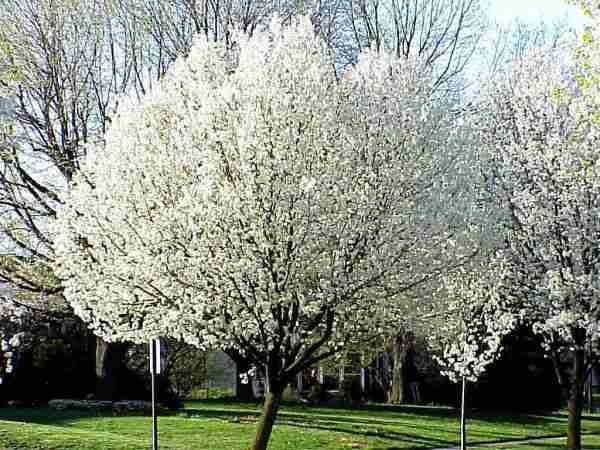
Bartlett Pears are originally from England but were brought to the US in the 1790s and renamed after a man who was not involved with their discovery—sorry, John Stair. They are the best of both worlds. They produce delicious fruit and beautiful white flowers all over the tree, the latter of which appear in the spring before the leaves grow back. Pears are ready to eat in the late summer, and this hearty, long-lasting tree, will yield a harvest for generations to come.
Zones 5-7 are ideally suited to this beauty. Bartletts need water and don’t take kindly to places that don’t offer it consistently. You’ll need to prepare for it to grow 20 feet tall and 20 feet wide or get the dwarf variety for a smaller space. At more than 2 feet a year, it is also an incredibly fast grower.
As with most fruit trees, cross-pollination is needed in order to produce. Make your yard a bountiful haven. The wildlife will also be thrilled.
4. American Hornbeam (Carpinus caroliniana)
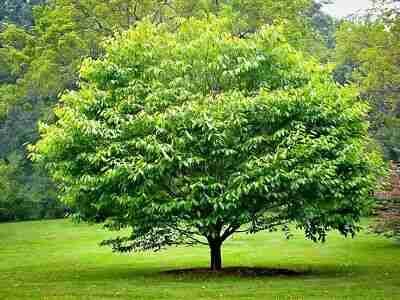
Unlike the first three on this list, the American Hornbeam is a low-maintenance beauty and a slow grower. It will take many years to reach its full potential of up to 35 feet tall and equally as wide. But when it does, it’s well worth it. The branches fan out with magnificent reach, covering the ground with shade.
Successful in zones 3-9, they’ll grow virtually anywhere in the United States as long as there is part to full shade and some moisture in the soil. It’s fairly easy to please, as it will also grow in full sun, despite its preferences.
Their thick green foliage and graceful, rounded shape is a real centerpiece for any yard. Each season you’ll find a different—and attractive—display. Autumn colors won’t skip over this tree, and the unique bark and ability to hang on to many of its leaves, enhances even a winter landscape. It’s a tough tree by every estimation.
If you’re hoping to attract some wildlife, you’re in luck with the American Hornbeam. The flowers and seeds will entice many types of furry and feathery friends to assist with the already minimal maintenance. Cue the Snow White music.
5. Japanese Snowbell (Strax japonicus)
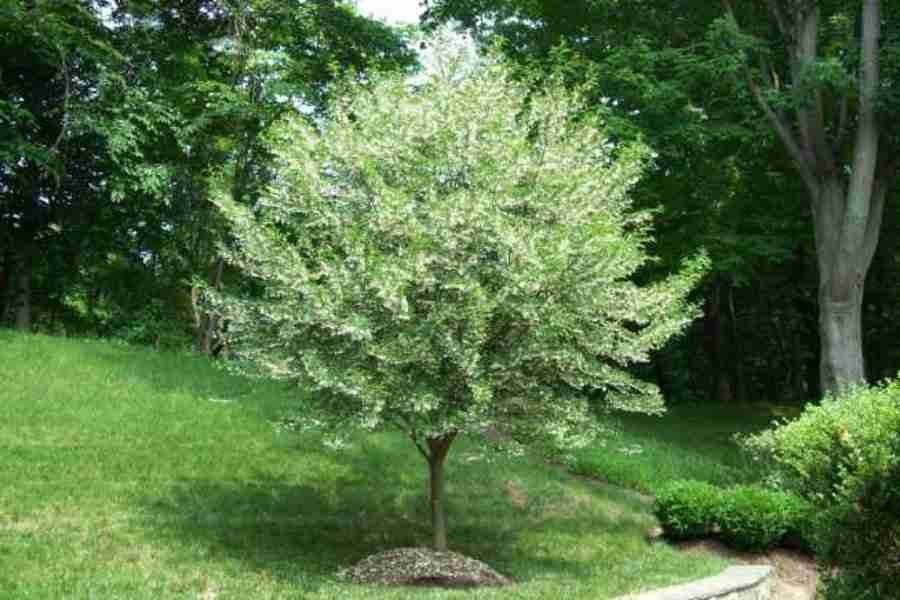
Something else to consider is scent. Anyone who has walked by a jasmine plant or lilac bush understands the all-encompassing experience of exceptionally fragrant flora. Japanese Snowbells aren’t quite as strong-smelling but are equally as attention-grabbing when the white, bell-like flowers open in late spring or early summer. The blooms dangle below the dark green foliage creating a unique look.
In fact, with the way the branches grow, snowbells can look a bit like a shrub. Trim up the bottom few branches for more of a traditional tree silhouette.
And in the fall, you can expect the green to become yellow and red. These stunners grow 20-30 feet tall and equally as wide and are happiest in zones 5-8 in full or partial sun. Just make sure you have enough water. While the desert has some fascinating plants of its own, these trees aren’t a fan.

